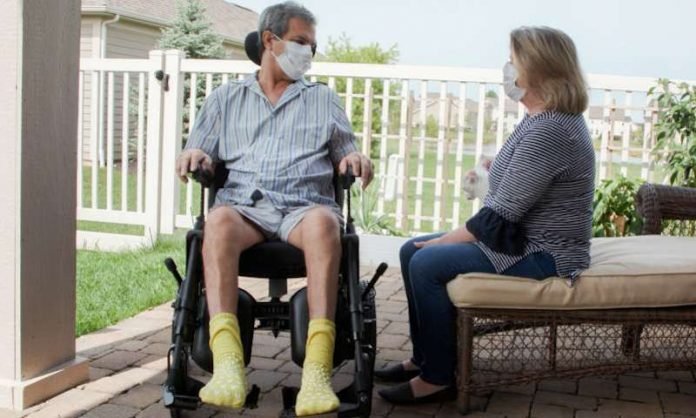
In a new study, researchers provide new hope for recovery from degenerative neurological diseases—such as ALS and multiple sclerosis—as well as from damage caused by traumatic brain and stroke.
They discovered a new type of immune cell that not only rescues damaged nerve cells from death but partially reverses nerve fiber damage.
The researchers also identified a human immune cell line, with similar characteristics, that promotes nervous system repair.
The research was conducted by a team at Ohio State University and the University of Michigan.
The cell discovered by these researchers is a granulocyte, a type of white blood cell that has small granules. The most common granulocytes, neutrophils, normally help the body fight off infection.
The unique cell type resembles an immature neutrophil but is distinctive in possessing neuroprotective and neuroregenerative properties.
It drives central nervous system axon (nerve) regrowth in vivo, in part through the secretion of a cocktail of growth factors.
The team found that this pro-regenerative neutrophil promotes repair in the optic nerve and spinal cord, demonstrating its relevance across CNS compartments and neuronal populations.
A human cell line with characteristics of immature neutrophils also exhibited neuro-regenerative capacity, suggesting that our observations might be translatable to the clinic
According to the researchers, this immune cell subset secretes growth factors that enhance the survival of nerve cells following traumatic injury to the central nervous system.
It stimulates severed nerve fibers to regrow in the central nervous system, which is really unprecedented.
In the future, this line of research might ultimately lead to the development of novel cell-based therapies that restore lost neurological functions across a range of conditions.
One author of the study is Dr. Benjamin Segal, a professor and chair of the Department of Neurology.
The study is published in the journal Nature Immunology.
Copyright © 2020 Knowridge Science Report. All rights reserved.



